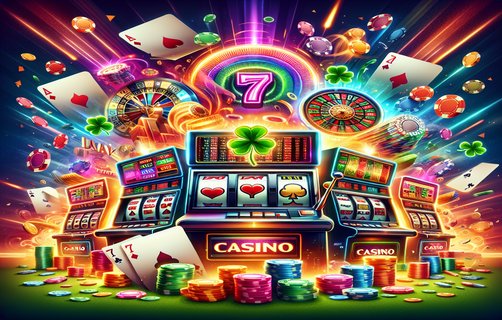Unpacking Game Mechanics: The Interplay of Luck and Strategy
खेल तंत्र का विश्लेषण: भाग्य और रणनीति का संबंध
In the realm of board gaming, the interface of luck and strategy has become a fascinating topic of discussion among enthusiasts and game designers alike. Luck-driven gameplay, which often relies on random outcomes, can create dynamic experiences that keep players engaged. However, it's not just about rolling dice; the mechanics behind victory point trackers, turn allocation limits, and center-controlled boards significantly shape the overall gaming experience.

Luck-driven gameplay plays a pivotal role in many games, as random elements introduce unpredictability. Players often find themselves at the mercy of chance, exemplifying how luck can tilt the game's balance. Yet, this randomness should ideally be woven into the fabric of the game, allowing for strategic choices that can mitigate its effect. A well-designed game will let players employ tactics that capitalize on luck while executing strategies. For instance, rolling the dice isn’t merely about the outcome; it’s about the calculations players make before the throw, weighing risk versus reward.
Victory point trackers add another strategic layer to board games, as they compel players to plan their moves with foresight. By assigning values to various actions and achievements, players focus not only on their current position but also on future outcomes. This mechanism encourages a careful balance between short-term gains and long-term strategies, fostering a more profound engagement with the game.
Turn allocation limits introduce a structured dynamic to the game, creating a hierarchy of action which can lead to strategic dilemmas. Players must decide how to allocate their limited opportunities to act—whether to fortify positions, attack others, or progress toward victory. This aspect turns what could be a chaotic experience into an orchestrated series of decisions influenced by both luck and skill.
Center-controlled boards further illustrate the premeditated chaos of game design. In such scenarios, players vie for control over central spaces, leading to tactical skirmishes. Success often hinges on your ability to predict opponents' movements. The ensuing battles not only hinge on strategy but also intertwine with luck, as unexpected rolls or actions by opponents can seize control of previously held positions.
Finally, ranger and tileset mechanisms can create a layer of innovation within gameplay. Tilesets can modularly change game layouts, thus influencing strategies while the ranger mechanics might incentivize exploration and conflict resolution. Through these features, games can evolve dramatically after multiple sessions, preserving replayability by challenging players with new scenarios each time.
In conclusion, understanding these components provides a comprehensive view of contemporary board gaming. Distilling the balance between luck and strategy reveals a rich tapestry that culminates in enjoyable and engaging gameplay experiences.
बोर्ड गेमिंग के क्षेत्र में, भाग्य और रणनीति का इंटरफ़ेस एक ऐसा रोचक विषय बन गया है जिस पर उत्साही और गेम डिज़ाइनर दोनों के बीच चर्चा होती है। भाग्य-प्रेरित गेमप्ले, जो अक्सर यादृच्छिक परिणामों पर निर्भर करता है, गतिशील अनुभव पैदा कर सकता है जो खिलाड़ियों को संलग्न रखता है। हालाँकि, यह केवल पासा फेंकने के बारे में नहीं है; विजय अंक ट्रैकर्स, टर्न आवंटन सीमाएं, और केंद्र-नियंत्रित बोर्ड्स के पीछे की यांत्रिकी कुल मिलाकर गेमिंग अनुभव को महत्वपूर्ण रूप से आकार देती हैं।
भाग्य-प्रेरित गेमप्ले कई खेलों में एक महत्वपूर्ण भूमिका निभाता है, क्योंकि यादृच्छिक तत्व अस्थिरता लाते हैं। खिलाड़ी अक्सर मौके के हाथ में होते हैं, जो दिखाता है कि भाग्य खेल के संतुलन को कैसे झुका सकता है। फिर भी, यह यादृच्छिकता सिद्धांततः खेल के ताने-बाने में बुनी जानी चाहिए, खिलाड़ियों को अपनी पसंद बना कर उसके प्रभाव को कम करने की अनुमति देनी चाहिए। एक अच्छे डिज़ाइन किए गए खेल में खिलाड़ियों को भाग्य का लाभ उठाने की अनुमति होगी जबकि रणनीतियों को लागू किया जाएगा। उदाहरण के लिए, पासा फेंकना सिर्फ परिणाम के बारे में नहीं है; यह इस बारे में है कि खिलाड़ी फेंकने से पहले कितनी गणनाएँ करते हैं, जोखिम बनाम इनाम का वजन करते हैं।
विजय अंक ट्रैकर्स बोर्ड खेलों में एक और रणनीतिक परत जोड़ते हैं, क्योंकि वे खिलाड़ियों को अपनी चालें आगे की सोच के साथ योजना बनाने के लिए मजबूर करते हैं। विभिन्न क्रियाओं और उपलब्धियों के लिए मान निर्धारित करके, खिलाड़ी न केवल अपनी वर्तमान स्थिति पर ध्यान केंद्रित करते हैं बल्कि भविष्य के परिणामों पर भी। यह तंत्र खिलाड़ियों को अल्पकालिक लाभ और दीर्घकालिक रणनीतियों के बीच संतुलन बनाने के लिए प्रोत्साहित करता है, खेल के प्रति गहरी संलग्नता को बढ़ावा देता है।
टर्न आवंटन सीमाएँ खेल में एक संरचित गतिशीलता पेश करती हैं, जो क्रिया का एक पदानुक्रम बनाती हैं जो रणनीतिक दुविधाओं की संभावना पैदा करती हैं। खिलाड़ियों को यह तय करना होगा कि वे अपनी सीमित कार्य करने की अवसरों को कैसे आवंटित करें—चाहे वे स्थानों को मजबूत करना चाहते हैं, दूसरों पर हमला करना चाहते हैं, या विजय की दिशा में बढ़ना चाहते हैं। यह पहलू एक अराजक अनुभव को एक संगठित निर्णयों की श्रृंखला में बदल देता है, जिसे भाग्य और कौशल दोनों द्वारा प्रभावित किया जाता है।
केंद्र-नियंत्रित बोर्ड्स खेल डिज़ाइन की पूर्व-निर्धारित अराजकता को और स्पष्ट करते हैं। ऐसी स्थितियों में, खिलाड़ी केंद्रीय स्थानों पर नियंत्रण के लिए प्रतिस्पर्धा करते हैं, जो रणनीतिक झगड़ों को जन्म देता है। सफलता अक्सर आपके द्वारा विरोधियों की चालों की भविष्यवाणी करने की क्षमता पर निर्भर करती है। इसके परिणामस्वरूप होने वाली झड़पें न केवल रणनीति पर निर्भर करती हैं बल्कि भाग्य के साथ भी intertwined होती हैं, क्योंकि अप्रत्याशित रोल या विरोधियों की कार्रवाई पूर्व में धारण किए गए स्थानों पर नियंत्रण को छीन सकती है।
अंत में, रेंजर और टाइलसेट तंत्र गेमप्ले में नवाचार का एक स्तर बना सकते हैं। टाइलसेट गेम लेआउट को माड्यूलर रूप से बदल सकते हैं, इस प्रकार रणनीतियों को प्रभावित करते हैं जबकि रेंजर तंत्र अन्वेषण और संघर्ष समाधान को प्रोत्साहित कर सकते हैं। इन विशेषताओं के माध्यम से, खेल कई सत्रों के बाद नाटकीय रूप से विकसित हो सकते हैं, प्रत्येक बार खिलाड़ियों को नए परिदृश्यों के साथ चुनौती देकर पुनः खेलने की क्षमता को बनाए रखते हैं।

अंत में, इन घटकों को समझने से समकालीन बोर्ड गेमिंग का एक व्यापक दृश्य प्राप्त होता है। भाग्य और रणनीति के बीच संतुलन को स्पष्ट करना एक समृद्ध टैपेस्ट्री का अनावरण करता है जो आनंददायक और संलग्न गेमप्ले अनुभवों में culminates करता है।

comments
GamerGuru
This analysis beautifully captures the nuances of luck vs. strategy in gaming.
BoardBard
I love the depth of the article, especially the discussion on victory point trackers!
Strategist77
The interplay of luck and strategy is so well-articulated here, thanks for sharing.
LuckBeALady
I appreciate the insights on center-controlled boards; they make or break many games.
TileMaster
The mention of tilesets sparking innovation brings a fresh perspective to game design!